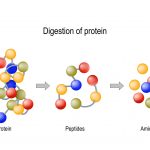CHRIS D. MELETIS, ND
In its simplest terms, aging can be explained by the concept of the wear-and-tear of life exceeding the repair. This is often how I start the conversation with patients as we journey into the concepts of biological age vs chronological age. In our youth, we are often all too eager to hit those societally imposed thresholds of prefrontal cortex development that dictate when we can drive, vote, and consume alcohol and other substances.
Biological age, on the other hand, refers to the age of your cells relative to cellular resilience, energy, healthy replication capacity, and DNA integrity. In our clinical practices, we meet individuals who seem to have dialed in their biological age and youthful capacity with diet, lifestyle, and good genetics. Yet good genetics, alone, does not equate to optimized biological age. I like to say, “Genetics load the gun, but lifestyle pulls the trigger.”
When working with our patients to mitigate the hands of time, we must focus on a number of factors to ameliorate the symptoms of age-related diseases or reduce their risk in the first place. Ensuring that tissues are perfused via healthy circulation, shoring up the health of the mitochondria, evaluating patients’ citric acid cycles, and supporting a healthy gut microbiome are all steps that can be taken to encourage healthy aging. In this article, I will discuss the role of each of these factors in aging and what can be done to modify them in a way that promotes longevity.
Impaired Circulation & Aging
Our tissues and organs must be perfused with nourishing amounts of oxygen in order to not only survive, but also thrive. One of the most important substances involved in healthy circulation is nitric oxide (NO), which plays a critical role in regulating blood flow as well as mitochondrial respiration and biogenesis.1 NO is a gaseous signaling molecule involved in a number of important processes, such as modulation of vascular tone, neurotransmission, mitochondrial respiration, and skeletal muscle contractility.2 NO may be produced by the oxidation of L-arginine and also by the sequential reduction of dietary nitrate to nitrite and then NO. The body’s nitrate stores can be increased by eating green, leafy vegetables, which are rich in nitrate. Supplementing with beetroot and potassium nitrate are also excellent ways to increase NO and can be an easier way to enhance NO than consuming large amounts of vegetables.
Abundant evidence indicates that enhancing NO bioavailability may contribute to healthy aging via NO’s ability to improve blood flow, circulation, and tissue oxygenation.3 One example of this is the role played by inorganic nitrate in the form of beetroot in improving blood flow in patients with peripheral arterial disease (PAD),4 a condition in which reduced blood and oxygen delivery to tissues can lead to intermittent claudication, ie, leg pain during walking that improves with rest. Human research indicates beetroot increases peripheral tissue oxygenation in areas of hypoxia in PAD patients.4
Impaired blood flow to the brain may lead to cognitive impairment and reduced information-processing speed during aging.5,6 Impaired cerebral perfusion also predates and likely contributes to the pathogenesis of dementia.7 Chronic ischemia, caused by abnormal arterioles, capillaries, and venules, can lead to white matter hyperintensities.8 Age-related white matter degeneration is associated with reduced executive functioning, including measures of working memory9,10 such as task switching,11 episodic retrieval,12 and dichotic listening,13 where a subject repeats aloud a message spoken into one ear while ignoring a message spoken into the other ear.
Dietary nitrate may enhance blood flow in hypoxic or ischemic regions of the brain in patients with dementia and cognitive decline.8 Based on this line of reasoning, researchers conducted a study comparing the effects of a high vs low-nitrate diet on cerebral perfusion in older adults.8 They found that a high-nitrate diet was associated with increased regional cerebral perfusion in frontal lobe white matter in an area involved in executive functioning. The researchers concluded, “[Our] data suggest that a diet high in nitrate might allow increased perfusion to those areas of the brain known to be at risk in the elderly and important for cognitive function—the deep white matter in the frontal lobe.”8
During aging, there is a progressive impairment of endothelial function.14 This could result in decreased production of NO in the endothelium and lead to the reduced perfusion that occurs in tissues with aging.8 Since improved exercise capacity correlates with higher plasma nitrite levels,3 regular exercise is critical for healthy circulation and aging.
Mitochondrial Rejuvenation
The free radical theory of aging states that the generation of intracellular reactive oxygen species (ROS) determines lifespan. Mitochondria are the sites of energy production in the cell. However, in the process of producing energy, they also churn out ROS, which, though necessary to a certain extent, can overwhelm the body when generated in excess and lead to oxidative stress and accelerated aging.
Mitochondrial integrity declines with age. Many studies have demonstrated a vicious cycle in which ROS cause impairment of mitochondria, which in turn results in increased oxidant production that encourages more mitochondrial damage.15 Studies have found that old mitochondria appear morphologically altered and generate more oxidants and less ATP compared to younger mitochondria.16 In addition, aging alters mitochondrial oxidative phosphorylation activity.16 There is also evidence that aging impacts components of the electron transport chain.15 For example, in a model of aging that used the nematode C elegans and the fruit fly Drosophila, there was an approximate 2-fold decline in a large set of genes that play a role in ATP synthesis and mitochondrial respiration.17
The association between longevity and mitochondrial metabolism was reinforced by several worm studies indicating that interfering with the electron transport chain can have a significant effect on lifespan.15 Genetically altered mice with mitochondrial mutations and deletions have also been shown to suffer from significantly shortened lifespans as well as demonstrate a number of age-related phenotypes, including anemia, osteoporosis, hair graying, hair loss, and kyphosis (exaggerated rounding of the back).18,19 There was also a reduction in respiratory chain activity and ATP generation in tissues such as the heart. These alterations suggest that damaged mitochondria can accelerate the aging process. Indeed, the amount of mitochondrial DNA mutations is known to increase with age in human tissues such as the brain, heart, colon, and skeletal muscle.20-23
As oxidative stress plays a role in mitochondrial damage, cellular lifespan can be prolonged by increasing antioxidant levels. For instance, increasing the level of the antioxidant enzyme superoxide dismutase (SOD) has been shown to increase the lifespan of primary fibroblasts and to decrease the rate of telomere shortening.24 Conversely, suppressing SOD triggered senescence.25
Various dietary supplements can be used to enhance mitochondrial health. Nicotinamide riboside, a form of vitamin B3, is an effective mitochondrial rejuvenator. It is a precursor of nicotinamide adenine dinucleotide (NAD+), a coenzyme essential to the mitochondria’s energy-generating process. A number of cellular and animal studies have found nicotinamide riboside can prevent and reverse diabetic peripheral neuropathy as well as neuropathy in prediabetes.26,27 In prediabetic mice, nicotinamide riboside also enhanced glucose tolerance and reduced weight gain, liver damage, and the development of hepatic steatosis.27
In humans, nicotinamide riboside has been shown to elevate levels of NAD+.28,29 In one study, researchers investigated whether raising the level of NAD+ in heart failure patients could reduce mitochondrial dysfunction and inflammatory activation in peripheral blood mononuclear cells (PBMCs).30 The scientists compared the PBMC mitochondrial respiration of 19 hospitalized patients with stage D heart failure with that of 19 healthy controls. They then devised an in-vitro model of sterile inflammation by treating healthy PBMCs with mitochondrial damage-associated molecular patterns (MitoDAMPs) derived from human heart tissue. After that, they sampled blood from the heart failure patients before and after supplementing with oral nicotinamide riboside for 5-9 days. The study found that heart failure is associated with reduced respiratory capacity and increased proinflammatory cytokine gene expressions. In the in-vitro model, MitoDAMP-treated PBMCs generated the inflammatory cytokine interleukin (IL)-6, which suppressed mitochondrial respiration by reducing complex I activity. Oral administration of nicotinamide riboside improved PBMC respiration and reduced proinflammatory cytokine gene expression in 4 subjects with heart failure. The study authors concluded, “Increasing NAD levels may have the potential to improve mitochondrial respiration and attenuate proinflammatory activation of PBMCs in [heart failure].”
Other mitochondrial rejuvenators include coenzyme Q10 (CoQ10), pyrroloquinoline quinone (PQQ), carnitine, and substances that increase NO bioavailability, such as beetroot. CoQ10 is well known for its ability to enhance mitochondrial function. In a study of fibromyalgia patients, CoQ10 reduced mitochondrial oxidative stress, which was accompanied by a reduction in pain, anxiety, and inflammation.31 Mitoquinol mesylate is a form of CoQ10 that works as an especially strong mitochondrial antioxidant, thus may be a particularly viable means of enhancing mitochondrial health. In a study of patients with PAD, it improved vascular endothelial function and SOD levels as well as maximal walking capacity.32 It also delayed the onset of claudication in PAD patients.32 Other research indicates it can reduce mitochondrial damage caused by high-intensity exercise.33
PQQ is a plant-derived compound that in animal research has reduced exercise-induced fatigue and suppressed oxidative damage by improving mitochondrial function.34 It boosts the activity of antioxidant enzymes while blocking the overproduction of ROS and inflammatory mediators.34 In a rodent model of chronic heart failure, PQQ prevented mitochondrial dysfunction, thereby reducing cardiac damage and preventing the development of congestive heart failure (CHF).34 In humans, PQQ has been shown to enhance cognitive function by improving cerebral blood flow and oxygen metabolism.35
Carnitine is an amino acid that can support mitochondrial health. In patients with non-alcoholic fatty liver disease, it activated the mitochondria, leading to improved liver health.36 Carnitine and CoQ10 play an important role in the functioning of myocardial mitochondria, and are deficient in patients with CHF.37 In a randomized, double-blind, placebo-controlled trial of 31 heart failure patients and 31 controls, patients given a combination of carnitine and CoQ10 experienced a reduction in proinflammatory cytokines, a pronounced improvement in quality of life, and a decline in heart failure as defined by the New York Heart Association.37
As noted earlier in this article, NO plays an important role in mitochondrial respiration and biogenesis.1 Therefore, enhancing NO bioavailability with beetroot is a viable way to support mitochondrial health.
Toxic Burden, Aging, & Mitochondria
Modern humans are exposed to a constant barrage of toxic chemicals that may induce mitochondrial damage and accelerated aging. Parabens, found in many personal care products, are mitochondrial toxins that reduce the mitochondrial membrane potential and uncouple the respiratory chain, leading to reduced ATP concentration as a result of mitochondrial damage.38 Bisphenol A (BPA), which is found in the linings of some food containers and water bottles, has toxic effects in human cell lines via a mitochondrial pathway.39,40
Additionally, pesticide exposure is linked to the development of a number of diseases through mechanisms involving epigenetic alterations and mitochondrial dysfunction.41 Pesticide exposure is associated with various types of cancers; diabetes; neurodegenerative disorders such as Parkinson’s, Alzheimer’s, and amyotrophic lateral sclerosis (ALS); cardiovascular disease such as atherosclerosis and coronary artery disease; chronic nephropathies; and aging.41 Therefore, it is important to work with our patients to reduce their toxic burdens by recommending a good detoxification regimen and helping them minimize exposures as much as possible.
The Citric Acid Cycle & Aging
One way to evaluate how well the mitochondria are producing ATP and to determine patients’ toxic burden is by measuring their organic acids and environmental toxins. These tests shed light on a patient’s ability to effectively complete a series of chemical reactions known as the citric acid cycle, also called the TCA cycle (tricarboxylic acid cycle) or the Krebs cycle. This cycle releases stored energy from fats, proteins, and carbohydrates. The citric acid cycle generates NADH, which is funneled into the electron transport (oxidative phosphorylation) pathway of the mitochondria. This leads to the oxidation of nutrients, which generates energy in the form of ATP. Age-related changes in the citric acid cycle lead to epigenetic alterations that contribute to aging.42 By interpreting the organic acid test, a clinician can determine the patient’s weak links in the chain – ie, deficiencies in nutrients and citric acid cycle intermediates that interfere with proper cycle functioning and minimize detrimental epigenetic changes. Testing for environmental toxins along with an organic acids panel can also paint a clear picture of which contaminants a patient needs to detoxify.
The Microbiome & Aging
The gut microbiota undergoes substantial alterations over a lifetime due to age, diet, environment, and disease.43 As chronological age increases, the gut microbiota diversity also increases.44 Yet, when measures of biological age are used while adjusting for chronological age, overall richness declines while bacteria associated with frailty increase.44 Experimental models indicate that age-related gut dysbiosis may lead to unhealthy aging and a reduced lifespan.44 Gut dysbiosis can promote chronic low-grade inflammation, resulting in many age-associated degenerative diseases and overall unhealthy aging.44 The gut microbiota sends messages to the host via various biomolecules, epigenetic means, and nutrient signaling-independent pathways.44 When age-related gut dysbiosis interferes with these pathways, it can impact the health and longevity of the host.44 For this reason, a probiotic supplement is an important part of any healthy aging regimen.
Importance of Lifestyle Measures
Certain lifestyle measures can be used effectively along with dietary supplements to slow aging and reduce the risk of age-related diseases. For example, yoga and meditation have been shown to reduce markers of cellular aging.45 In a study of 96 people, participation in yoga and meditation was linked to reductions in cellular aging biomarkers of DNA damage, ROS, cortisol, and the inflammatory cytokine IL-6.45 In addition, total antioxidant capacity, telomerase (the enzyme that adds nucleotides to telomeres), brain-derived neurotrophic factor, and sirtuin-1 were increased after participating in yoga and meditation,45 indicating these activities are linked to healthy aging and lifespan. As exercise is also critical to healthy aging, patients should be urged to incorporate some form of enjoyable physical activity into their daily routine.
Conclusion
Several factors are critical to healthy aging, including ensuring patients’ tissues are well perfused with oxygen, supporting mitochondrial function, and resolving gut dysbiosis. This can be achieved through the use of beetroot and potassium nitrate for circulation, nicotinamide riboside, CoQ10, PQQ, and L-carnitine for mitochondrial health, a high-quality probiotic to nourish the gut microbiome, and a variety of supplements as dictated by results of an organic acids panel. Lifestyle measures such as yoga, meditation, and exercise, a diet including plenty of green, leafy vegetables, and avoiding exposure to toxins will also go a long way in warding off age-related disease and lead to a greater quality of life in patients’ senior years.
References:
- tamler JS, Meissner G. Physiology of nitric oxide in skeletal muscle. Physiol Rev. 2001;81(1):209-237.
- Jones AM, Vanhatalo A, Seals DR, et al. Dietary Nitrate and Nitric Oxide Metabolism: Mouth, Circulation, Skeletal Muscle, and Exercise Performance. Med Sci Sports Exerc. 2021;53(2):280-294.
- Jones AM. Dietary nitrate supplementation and exercise performance. Sports Med. 2014;44 Suppl 1(Suppl 1):S35-45.
- Kenjale AA, Ham KL, Stabler T, et al. Dietary nitrate supplementation enhances exercise performance in peripheral arterial disease. J Appl Physiol (1985). 2011;110(6):1582-1591.
- Meyer JS, Rogers RL, Judd BW, et al. Cognition and cerebral blood flow fluctuate together in multi-infarct dementia. Stroke. 1988;19(2):163-169.
- Rabbitt P, Scott M, Thacker N, et al. Losses in gross brain volume and cerebral blood flow account for age-related differences in speed but not in fluid intelligence. Neuropsychology. 2006;20(5):549-557.
- Ruitenberg A, den Heijer T, Bakker SL, et al. Cerebral hypoperfusion and clinical onset of dementia: the Rotterdam Study. Ann Neurol. 2005;57(6):789-794.
- Presley TD, Morgan AR, Bechtold E, et al. Acute effect of a high nitrate diet on brain perfusion in older adults. Nitric Oxide. 2011;24(1):34-42.
- Charlton RA, Schiavone F, Barrick TR, et al. Diffusion tensor imaging detects age related white matter change over a 2 year follow-up which is associated with working memory decline. J Neurol Neurosurg Psychiatry. 2010;81(1):13-19.
- Oosterman JM, Van Harten B, Weinstein HC, et al. White matter hyperintensities and working memory: an explorative study. Neuropsychol Dev Cogn B Aging Neuropsychol Cogn. 2008;15(3):384-399.
- O’Sullivan M, Jones DK, Summers PE, et al. Evidence for cortical “disconnection” as a mechanism of age-related cognitive decline. Neurology. 2001;57(4):632-638.
- Nordahl CW, Ranganath C, Yonelinas AP, et al. White matter changes compromise prefrontal cortex function in healthy elderly individuals. J Cogn Neurosci. 2006;18(3):418-429.
- Gootjes L, Scheltens P, Van Strien JW, Bouma A. Subcortical white matter pathology as a mediating factor for age-related decreased performance in dichotic listening. Neuropsychologia. 2007;45(10):2322-2332.
- Lyons D, Roy S, Patel M, et al. Impaired nitric oxide-mediated vasodilatation and total body nitric oxide production in healthy old age. Clin Sci (Lond). 1997;93(6):519-525.
- Balaban RS, Nemoto S, Finkel T. Mitochondria, oxidants, and aging. Cell. 2005;120(4):483-495.
- Shigenaga MK, Hagen TM, Ames BN. Oxidative damage and mitochondrial decay in aging. Proc Natl Acad Sci U S A. 1994;91(23):10771-10778.
- McCarroll SA, Murphy CT, Zou S, et al. Comparing genomic expression patterns across species identifies shared transcriptional profile in aging. Nat Genet. 2004;36(2):197-204.
- Trifunovic A, Wredenberg A, Falkenberg M, et al. Premature ageing in mice expressing defective mitochondrial DNA polymerase. Nature. 2004;429(6990):417-423.
- Kujoth GC, Hiona A, Pugh TD, et al. Mitochondrial DNA mutations, oxidative stress, and apoptosis in mammalian aging. Science. 2005;309(5733):481-484.
- Bua E, Johnson J, Herbst A, et al. Mitochondrial DNA-deletion mutations accumulate intracellularly to detrimental levels in aged human skeletal muscle fibers. Am J Hum Genet. 2006;79(3):469-480.
- Cortopassi GA, Arnheim N. Detection of a specific mitochondrial DNA deletion in tissues of older humans. Nucleic Acids Res. 1990;18(23):6927-6933.
- Greaves LC, Nooteboom M, Elson JL, et al. Clonal expansion of early to mid-life mitochondrial DNA point mutations drives mitochondrial dysfunction during human ageing. PLoS Genet. 2014;10(9):e1004620.
- Kennedy SR, Salk JJ, Schmitt MW, Loeb LA. Ultra-sensitive sequencing reveals an age-related increase in somatic mitochondrial mutations that are inconsistent with oxidative damage. PLoS Genet. 2013;9(9):e1003794.
- Serra V, von Zglinicki T, Lorenz M, Saretzki G. Extracellular superoxide dismutase is a major antioxidant in human fibroblasts and slows telomere shortening. J Biol Chem. 2003;278(9):6824-6830.
- Blander G, de Oliveira RM, Conboy CM, et al. Superoxide dismutase 1 knock-down induces senescence in human fibroblasts. J Biol Chem. 2003;278(40):38966-38969.
- Chandrasekaran K, Anjaneyulu M, Choi J, et al. Role of mitochondria in diabetic peripheral neuropathy: Influencing the NAD(+)-dependent SIRT1-PGC-1α-TFAM pathway. Int Rev Neurobiol. 2019;145:177-209.
- Trammell SA, Weidemann BJ, Chadda A, et al. Nicotinamide Riboside Opposes Type 2 Diabetes and Neuropathy in Mice. Sci Rep. 2016;6:26933.
- Conze D, Brenner C, Kruger CL. Safety and Metabolism of Long-term Administration of NIAGEN (Nicotinamide Riboside Chloride) in a Randomized, Double-Blind, Placebo-controlled Clinical Trial of Healthy Overweight Adults. Sci Rep. 2019;9(1):9772.
- Airhart SE, Shireman LM, Risler LJ, et al. An open-label, non-randomized study of the pharmacokinetics of the nutritional supplement nicotinamide riboside (NR) and its effects on blood NAD+ levels in healthy volunteers. PLoS One. 2017;12(12):e0186459.
- Zhou B, Wang DD, Qiu Y, et al. Boosting NAD level suppresses inflammatory activation of PBMCs in heart failure. J Clin Invest. 2020;130(11):6054-6063.
- Sawaddiruk P, Apaijai N, Paiboonworachat S, et al. Coenzyme Q10 supplementation alleviates pain in pregabalin-treated fibromyalgia patients via reducing brain activity and mitochondrial dysfunction. Free Radic Res. 2019;53(8):901-909.
- Park SY, Pekas EJ, Headid RJ 3rd, et al. Acute mitochondrial antioxidant intake improves endothelial function, antioxidant enzyme activity, and exercise tolerance in patients with peripheral artery disease. Am J Physiol Heart Circ Physiol. 2020;319(2):H456-H467.
- Williamson J, Hughes CM, Cobley JN, Davison GW. The mitochondria-targeted antioxidant MitoQ, attenuates exercise-induced mitochondrial DNA damage. Redox Biol. 2020;36:101673.
- Liu L, Zhang Y, Liu T, et al. Pyrroloquinoline quinone protects against exercise-induced fatigue and oxidative damage via improving mitochondrial function in mice. FASEB J. 2021;35(4):e21394.
- Nakano M, Murayama Y, Hu L, et al. Effects of Antioxidant Supplements (BioPQQ™) on Cerebral Blood Flow and Oxygen Metabolism in the Prefrontal Cortex. Adv Exp Med Biol. 2016;923:215-222.
- Lim CY, Jun DW, Jang SS, et al. Effects of carnitine on peripheral blood mitochondrial DNA copy number and liver function in non-alcoholic fatty liver disease. Korean J Gastroenterol. 2010;55(6):384-389.
- Kumar A, Singh RB, Saxena M, et al. Effect of carni Q-gel (ubiquinol and carnitine) on cytokines in patients with heart failure in the Tishcon study. Acta Cardiol. 2007;62(4):349-354.
- Szeląg S, Zabłocka A, Trzeciak K, et al. Propylparaben-induced disruption of energy metabolism in human HepG2 cell line leads to increased synthesis of superoxide anions and apoptosis. Toxicol In Vitro. 2016;31:30-34.
- Wang C, He J, Xu T, et al. Bisphenol A(BPA), BPS and BPB-induced oxidative stress and apoptosis mediated by mitochondria in human neuroblastoma cell lines. Ecotoxicol Environ Saf. 2021;207:111299.
- Cheng W, Yang S, Li X, et al. Low doses of BPA induced abnormal mitochondrial fission and hypertrophy in human embryonic stem cell-derived cardiomyocytes via the calcineurin-DRP1 signaling pathway: A comparison between XX and XY cardiomyocytes. Toxicol Appl Pharmacol. 2020;388:114850.
- Mostafalou S, Abdollahi M. Pesticides and human chronic diseases: evidences, mechanisms, and perspectives. Toxicol Appl Pharmacol. 2013;268(2):157-177.
- Salminen A, Kauppinen A, Hiltunen M, Kaarniranta K. Krebs cycle intermediates regulate DNA and histone methylation: epigenetic impact on the aging process. Ageing Res Rev. 2014;16:45-65.
- Bana B, Cabreiro F. The Microbiome and Aging. Annu Rev Genet. 2019;53:239-261.
- Kim S, Jazwinski SM. The Gut Microbiota and Healthy Aging: A Mini-Review. Gerontology. 2018;64(6):513-520.
- Tolahunase M, Sagar R, Dada R. Impact of Yoga and Meditation on Cellular Aging in Apparently Healthy Individuals: A Prospective, Open-Label Single-Arm Exploratory Study. Oxid Med Cell Longev. 2017;2017:7928981.

Chris D. Meletis, ND is an educator, international author, and lecturer. He has authored 18 books and more than 200 scientific articles in prominent journals and magazines. Dr Meletis served as Dean of Naturopathic Medicine and CMO for 7 years at NUNM. He was recently awarded the NUNM Hall of Fame award by OANP, as well as the 2003 Physician of the Year by the AANP. Dr Meletis spearheaded the creation of 16 free natural medicine healthcare clinics in Portland, OR. Dr Meletis serves as an educational consultant for Fairhaven Health, Berkeley Life, TruGen3, US BioTek, and TruNiagen. He has practiced in Beaverton, OR, since 1992.





